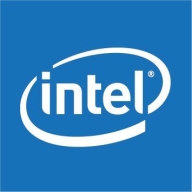

HPE ProLiant DL Servers and Intel Server Systems compete in the enterprise server solutions segment. Users lean towards HPE ProLiant DL Servers for favorable pricing and strong customer support, while Intel Server Systems are preferred for their advanced feature set and performance capabilities.
Features: HPE ProLiant DL Servers offer reliability, energy efficiency, and ease of management. Intel Server Systems provide superior processing power, scalability options, and support for high-demand workloads.
Room for Improvement: HPE ProLiant DL Servers could improve in hardware upgrade ease, system management, and virtualization support. Intel Server Systems need better virtualization support, software optimization, and simplified setup processes.
Ease of Deployment and Customer Service: HPE ProLiant DL Servers are known for easy installation and responsive customer service. Intel Server Systems, despite a more complex setup, benefit from robust customer service that aids in deployment.
Pricing and ROI: HPE ProLiant DL Servers are recognized as cost-effective with a strong ROI. Intel Server Systems, though having higher initial costs, are justified by long-term performance benefits and scalability potential.

HPE ProLiant DL Servers are utilized by organizations for tasks like virtualization, database hosting, and application hosting, deployed both on-premises and in private clouds for diverse needs.
Organizations depend on HPE ProLiant DL Servers for stability, performance, and reliability. They are essential for running active directories, enterprise applications, and handling high-performance computing. These servers are known for their easy setup, scalability, and extensive management capabilities like iLO. Offering compatibility with many components and energy efficiency, they provide reliable hardware and good performance under demanding conditions. However, there is a need for improved price, stability, scalability, airflow, and power consumption. Enhancements in controller cache, port sizes, SAN connectivity, support availability, and management interface are also required. Faster technical support, better documentation, simplified configurations, and enhanced monitoring features and security integration would benefit users.
What are the key features?HPE ProLiant DL Servers are implemented across industries like finance for active directories and payment solutions, education for virtual desktops, healthcare for database synchronization, and IT firms for high-performance computing and application hosting.
Storage is simple with the Intel Storage System JBOD2000 family, a 2U form factor system with support for twelve 3.5" LFF or twenty-four 2.5" SFF drives with a single or multi-cable connectivity. The JBOD2000 family includes redundant, hot-swap fans and the option for redundant, hot-swap power supplies. The JBOD2000S2 products support 6Gb/s SAS/SATA connectivity via industry-standard SFF-8088 connectors with the latest JBOD2000S3 version supports up to 12 Gb/s SAS connectivity via industry standard SFF-8644 connectors. All these JBOD offerings are designed to provide highly available and easily expandable storage for Intel servers at an affordable price point.
We monitor all Rack Servers reviews to prevent fraudulent reviews and keep review quality high. We do not post reviews by company employees or direct competitors. We validate each review for authenticity via cross-reference with LinkedIn, and personal follow-up with the reviewer when necessary.